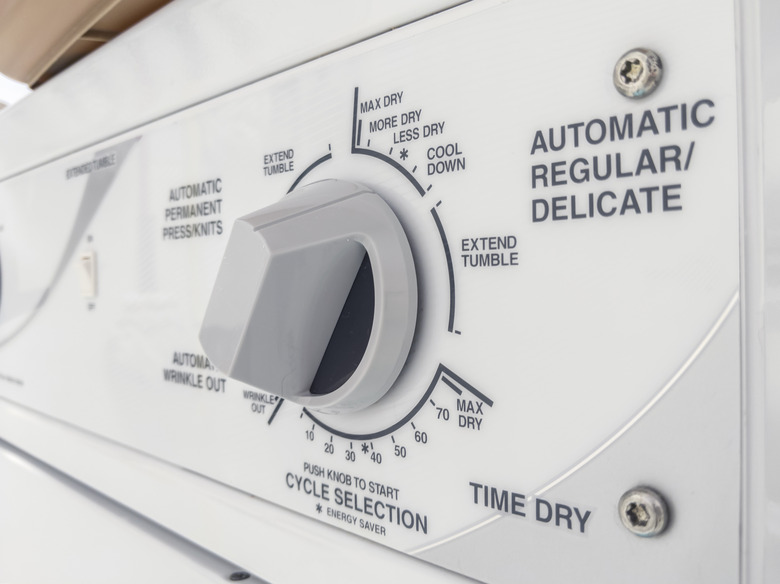Health Effects Of A Dryer Vent Discharging Inside A House
We may receive a commission on purchases made from links.
Maybe your house is cold and dry in the winter. Perhaps old construction practices have left you with a laundry area that's challenging to vent properly. Whatever the reason, if you're thinking about venting your clothes dryer to the inside of your home, don't do it. Sometimes touted as a solution even by dryer manufacturers, venting a dryer inside can cause health problems, damage your home, and increase your energy usage.
Negative Health Effects
Negative Health Effects
Venting a dryer indoors is never a good idea, but this is especially true if you have a gas dryer. Gas dryers emit carbon monoxide, and you don't want to risk pumping this dangerous gas into your home. Colorless and odorless, carbon monoxide can make you very sick, can cause permanent brain damage, and can kill you in as few as five minutes in high concentrations.
Electric dryers don't release carbon monoxide, but that doesn't make them safe to vent indoors. Dryer sheets and fabric softeners frequently contain toxic chemicals, including benzyl acetate, which can cause respiratory problems. Venting a dryer indoors can also cause health problems indirectly by encouraging mold growth. Indoor venting also throws dryer lint everywhere and releases small particles of it into the air you breathe.
Dizziness, drowsiness, blurred vision, dull headaches, vomiting, and breathing problems can all indicate exposure to fumes from a dryer vent. Some people also experience a burning sensation in their throat or lungs. If you're having any of these issues, step outside for some fresh air. Seek medical attention if your symptoms fail to subside.
Damaging Your House
Damaging Your House
On average, a clothes dryer pulls 1 to 2 gallons of water out of every wash load. That water turns into water vapor that gets vented through the exhaust. If this exhaust vents inside, you're dramatically increasing the humidity level in your home. This can lead to condensation on insulation, walls, wooden beams, and other parts of your home. All that water then causes deterioration and rotting, which can weaken important structures.
It can also encourage mold growth, sometimes in places you can't see. Depending on the type of mold and scope of the problem, this can lead to health issues as well as create a need for potentially expensive mold remediation. All this humidity also makes it harder for your dryer to dry laundry as quickly as it should. This leads to more dryer cycles and an increase in energy usage. It's also of note that soggy insulation performs poorly too, so your heating and cooling costs may also increase.
Proper Dryer Venting
Proper Dryer Venting
As a general rule, most dryers require venting via a 4-inch duct. Check the specifications for your dryer, however, as size matters. If you go too small, the dryer still won't vent properly. If you go too big, the dryer can't push enough air through the vent.
The best type of ductwork is rigid and straight when possible. Although metal ducting works best, you can use a more flexible plastic connection to get from the back of your dryer to the rest of the ductwork. If you do, make sure the transition duct you choose is UL-approved for safety.
Ideally, the ductwork should be no more than 25 feet long. If you have to bend your ducting to get it where you need it, deduct 5 feet of length for every 90-degree bend. If the vent hood outside your house is thinner than the ductwork leading to it, subtract 6 feet of length from your maximum vent length.
These rules cover the basics of safety, but they may not live up to the building codes in your area. Some codes forbid venting a dryer inside. Many also have strict rules about how you may vent your dryer to the outside. Verify that you're in compliance with both your dryer manufacturer and your local code enforcement office.
References
- The New York Times: HOME CLINIC; Caution With Dryer's Exhaust Vent
- Connect2Local: How a Dryer Vent Discharging Inside Impacts Your Health
- North Dakota State University Extension and Ag Research News: Don't Vent Dryer Into Home
- Iowa State University Department of Agricultural and Biosystems Engineering: Carbon Monoxide Poisoning: Health Effects
- National Library of Medicine: Benzyl Acetate
